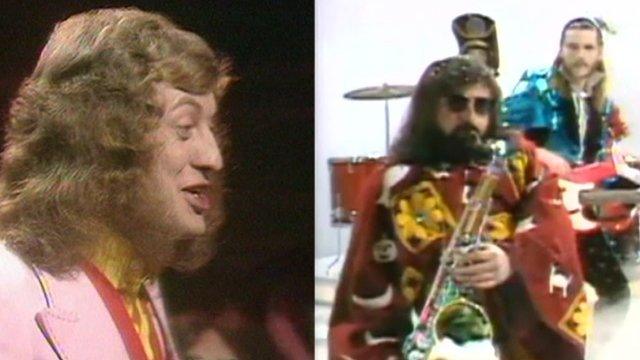Do they know it's Christmas? Where are the new festive classics?
- Published
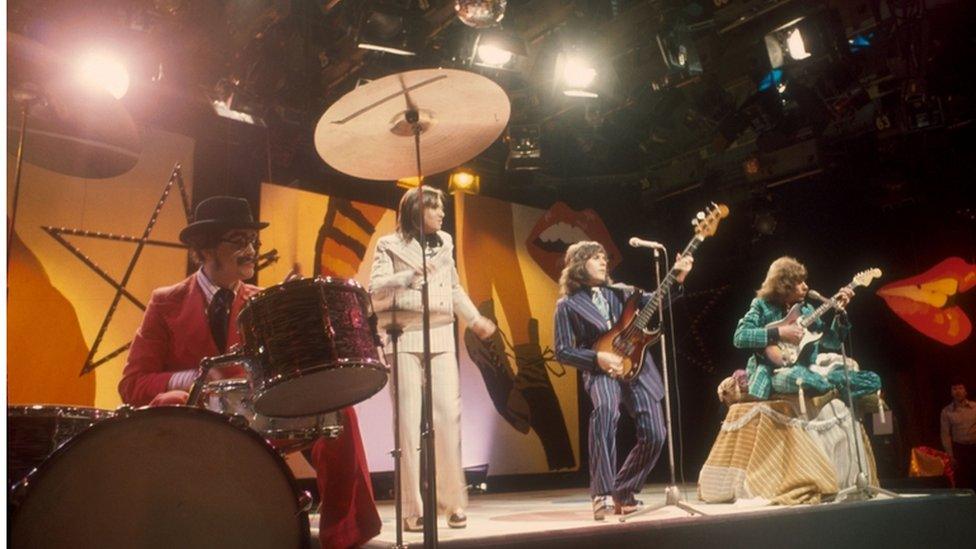
Mud, who wrote Lonely this Christmas, perform on Top of the Pops in the 1970s
Perhaps you were buying groceries at the supermarket or flicking through radio channels on the way to work when you first heard it this year - the folksy opening bars of Fairytale of New York, Shakin' Stevens's sleigh bells or the warbling of Mariah Carey.
Whether it fills you with joy or makes you change channels, hearing that first festive song marks the beginning of Christmas for many.
But our desire to stick with the traditional means almost all attempts to write a modern festive hit fall flat.
Stuck in the past
Looking at the most played Christmas songs of the past five years, the old standards dominate.
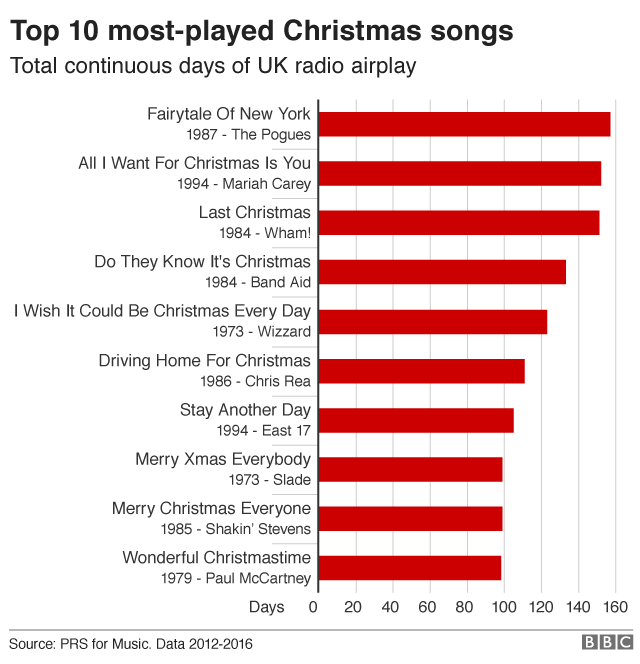
Just one song from the past two decades, Leona Lewis's 2013 effort One More Sleep, makes it in to the top 20, according to data from PRS for Music, which licenses music and pays out royalties.
Mariah Carey and East 17, who released their festive tunes back in 1994, come in at number two and number seven respectively.
Other than that, songs from the 1970s and 1980s - and even earlier - still dominate the airwaves.
Paul Clements, executive director of membership, international and licensing at PRS for Music, says: "As the way we celebrate the festive season continues to change and evolve, we can expect more contemporary Christmas songs to reflect that.
"But sometimes, when a season of nostalgia powers the airwaves, you just can't beat a good classic."
Peter Leathem, chief executive of PPL, which licenses the recorded music played in public, says: "Radio seeks to play what its listeners want played, with the most popular being the old classics.
"[They] have longer to rack up airplay familiarity, whereas newer Christmas songs really have to fight for their place on the airwaves."
Our favourite Christmas songs tend to be those that remind us of our childhoods, meaning few become instant classics.
James Masterton, from Chart Watch UK, says: "You consider something like the Mariah Carey song - it was a huge hit back in 1994, but I don't remember it being particularly notable as a cultural touch-point for another 10 years after that.
"It was only in the middle of the last decade that people began to wake up to the fact that, actually, this is a classic.
"Maybe that Leona Lewis song will gain a second wind and become one of the nation's favourites, as the people who've bought it as teenagers grow up and become nostalgic for their bit of their childhood."
Fragmented audience
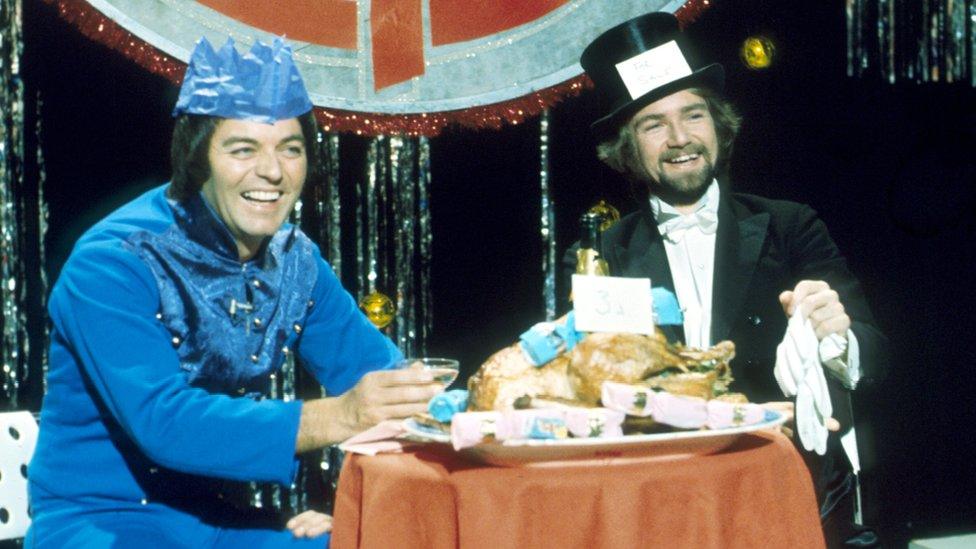
Tony Blackburn and Noel Edmunds present the 1976 Top of the Pops Christmas special
But perhaps there's more to it than that. Dr Richard Osborne, senior lecturer in popular music at Middlesex University, points out that the way we consume music has fundamentally changed.
Pop's audience has become more fragmented, with no one family music show to provide a focal point.
"When I ask my students what is the number one song in the charts at the moment, they just don't know. In the 1970s and 1980s - and to some extent in the 1990s - people knew what was in the charts and everybody listened to [BBC] Radio 1," he says.
"A song wasn't just a hit with young people - everyone heard it and songs were more a part of popular life."
Focus on singles

Australian artist Sia released a Christmas album this year
In countries such as the US, Christmas albums are big news, a tradition stretching back to Elvis and the Beach Boys.
This market is more receptive to newcomers, with original Christmas music from major contemporary artists Sia and Gwen Stefani making a dent on the charts this year.
Earlier this month, Stefani told the BBC that she had felt the weight of expectation when writing her festive album, You Make It Feel Like Christmas.
"It's hard, and you think about it, too, because you're competing with those songs. You're competing with people from the 40s and the 50s. It's pretty major.
"I would say that, to me, You Make It Feel Like Christmas has that instant, fun, sing-along, up-tempo feeling to it. But I don't know."
In the UK the focus has always been on hit Christmas singles, with streaming service Spotify placing further emphasis on the standalone hit.
At the time of writing, there are 17 Christmas songs in the UK top 40 chart. Some of them - such as Ariana Grande's Santa tell me - are less well known. But the selection correlates almost exactly with the songs on Spotify's Christmas Is Coming playlist.
In the digital era, it could be that bagging a spot on an influential playlist is the secret to producing a future Christmas classic.
But as lecturer Richard Osborne points out, it's harder than it looks.
"You need a song that appeals widely but isn't too cheesy- it's a fine line."
Surviving the X Factor

The Darkness have sold more than half a million copies of their Christmas song
One songwriter who understands that tricky blend is Dan Hawkins, guitarist with The Darkness, and co-author of the band's 2003 hit Christmas Time (Don't Let The Bells End).
It got to number two in the charts and has sold more than half a million copies.
He brings up the elephant in the room - the X Factor. Between 2005 and 2014, seven of the 10 UK Christmas number ones were released by winners of the reality show
"I'm sure Simon Cowell is quite a nice guy, but he has ruined Christmas for a lot of people, by taking the race for number one out of the equation," he says.
Like Wizzard, Mud and Slade before them, The Darkness found that operating in the playful glam rock genre was a helpful route to writing a hit Christmas song.
But the guitarist also attributes the single's surprise success to strong songwriting.
"Some bands add the word 'Christmas' to a half-decent song that didn't make it on to their album and add some sleigh bells, but to write a good Christmas song you need to go at it and write it from scratch.
"The truth is a lot of people are scared of putting their best songwriting in to a Christmas song, because it's a risk, and people don't like taking risks."
The end of the road for Christmas songs?
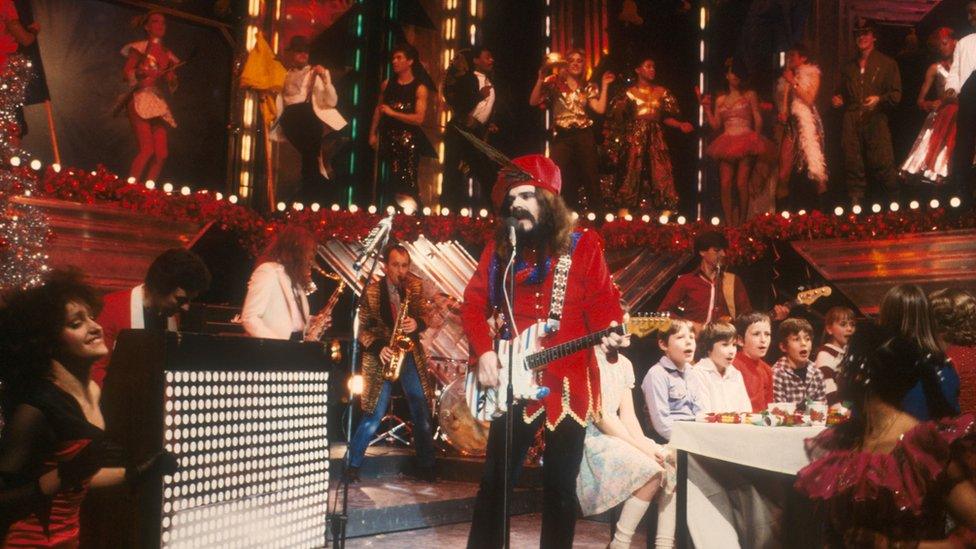
Wizzard (pictured) were beaten to Christmas number one in 1973 by Slade
So does this mean the Christmas single is doomed? Probably not.
Dr Osborne points out that classic Christmas songs seem to appear in cycles.
Slade, Mud and Wizzard released three of the most popular UK Christmas songs within a year of each other in the early 1970s.
The mid-1980s were also a bumper time for Christmas classics. Wham!, Band Aid, Chris Rea, The Pretenders, Shakin' Stevens and The Pogues all released festive songs within a four-year window that are still some of our most played 30 years later.
Finally, the early 1990s were dominated by pop classics from Mariah Carey and East 17.
"It goes through phases, and we are just going through a particularly long pause of not having one.
"But it would make sense [for it to start up again] in this age where the music market is focused on individual tracks, and everybody's trying to write that one big hit."
So if all you want for Christmas is to write a pop smash hit, this could be your year.
- Published17 December 2017
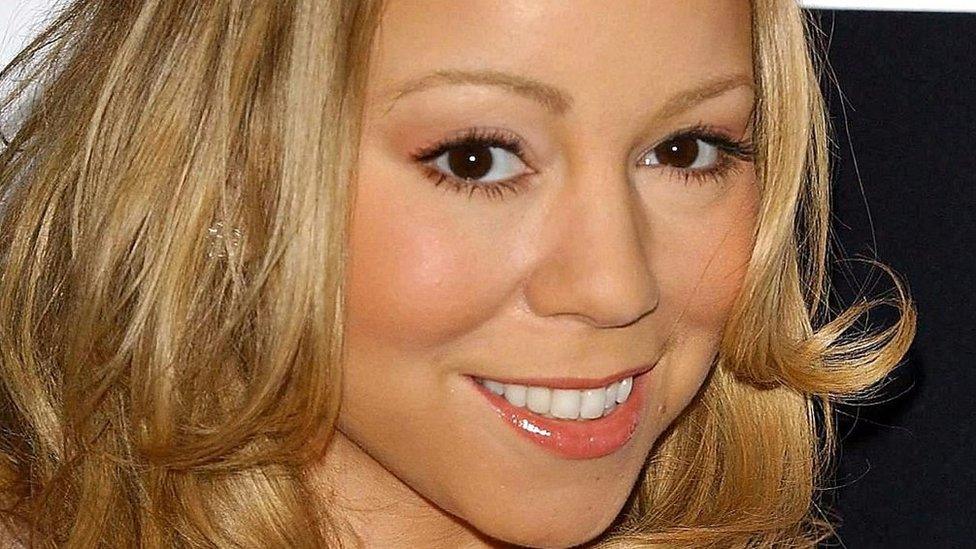
- Published8 December 2017
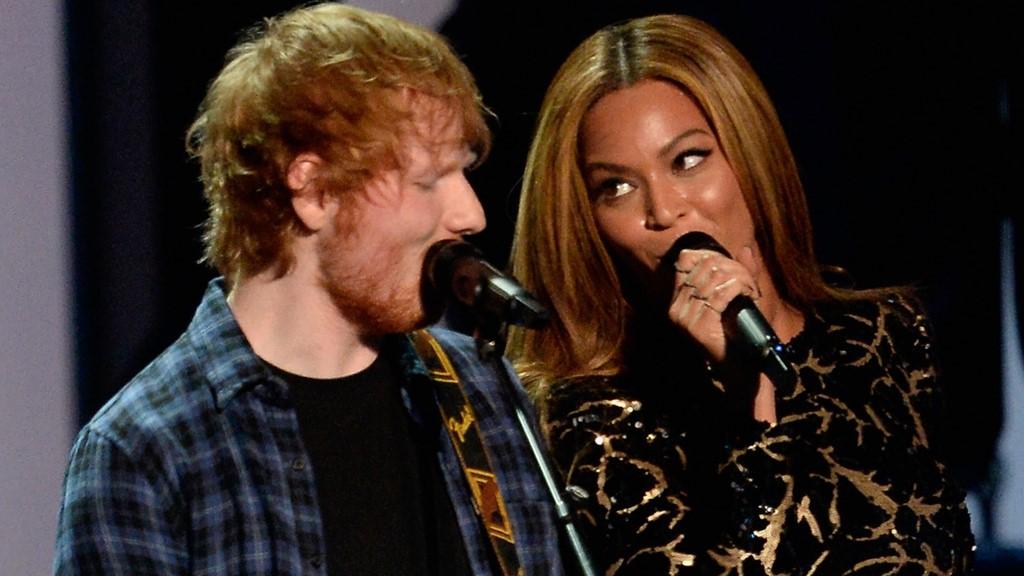
- Published6 December 2017

- Published21 December 2013

- Published18 December 2013
